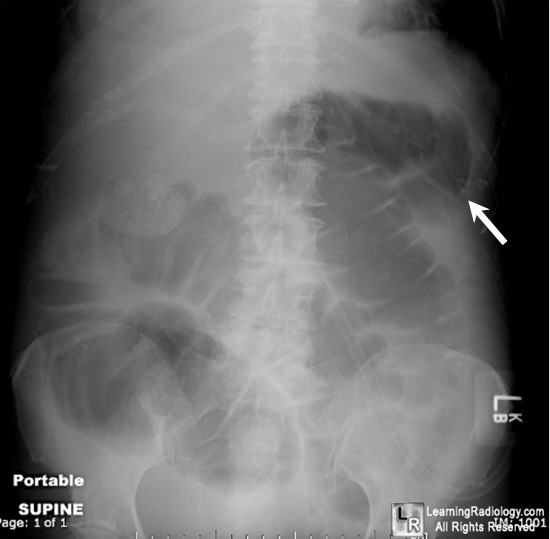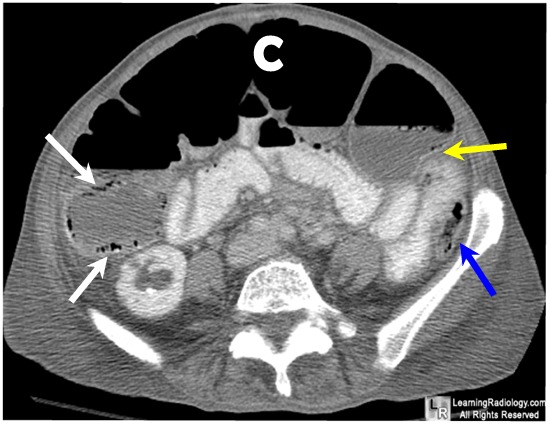|
|
Colon Cut-off Sign
General Considerations
- The pattern of bowel gas in which there is air in a slightly dilated transverse colon up to, but not beyond, the splenic flexure
- Originally described on conventional radiography, it has the same appearance and implications on CT
- In pancreatitis, the disease in which it was described, it is caused by inflammatory exudate from the pancreas which infiltrates the transverse mesocolon via the phrenicocolic ligament
- The phrenicocolic ligament is a peritoneal fold extending from the splenic flexure to the posterolateral aspect of the left hemidiaphragm
- The spleen rests on the shelf formed by this ligament
- This produces spasm of the transverse colon or actual physical narrowing of the splenic flexure
- The transverse colon being the highest part of the large bowel when the patient is supine, contains air and is frequently dilated in the Colon Cutoff Sign
Differential Diagnosis
- Other diseases besides pancreatitis can produce a similar picture of air abruptly ending at the splenic flexure
 
Colon Cutoff Sign. White arrow on conventional radiograph points to air in colon which abruptly terminates at the splenic flexure. On CT, there is gas in the bowel wall (white arrows). The colon (C) is again seen to be dilated to the splenic flexure (yellow arrow). The descending colon is decompressed (blue arrow)
For more information, click on the link if you see this icon 
For these same photos without the arrows, click here and here
Signs in Imaging: The Colon Cutoff Sign. Perry J. Pickhardt, MD. Radiology. 2000;215:387-389
|
|
|